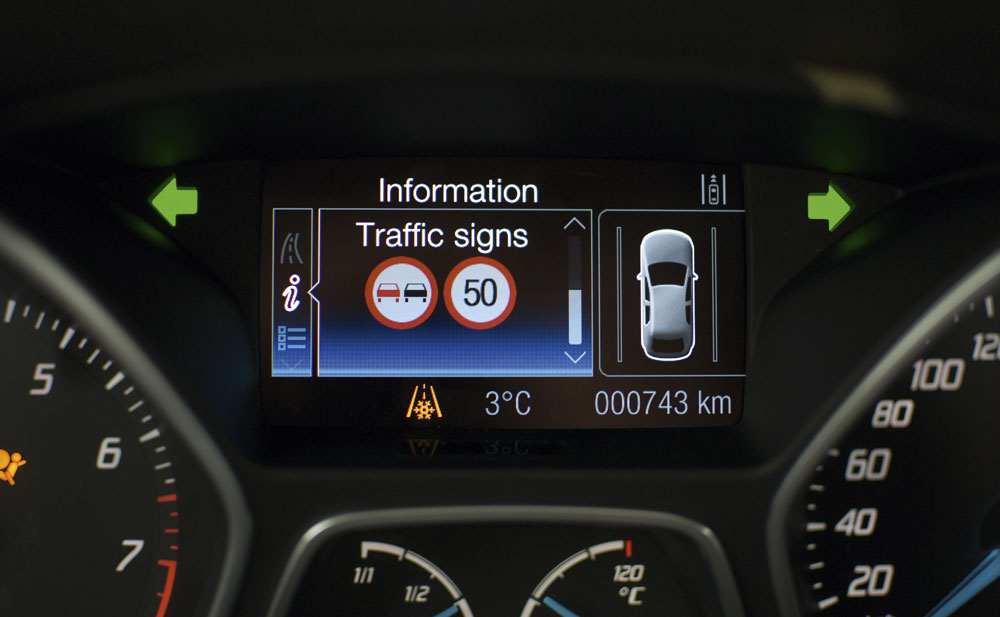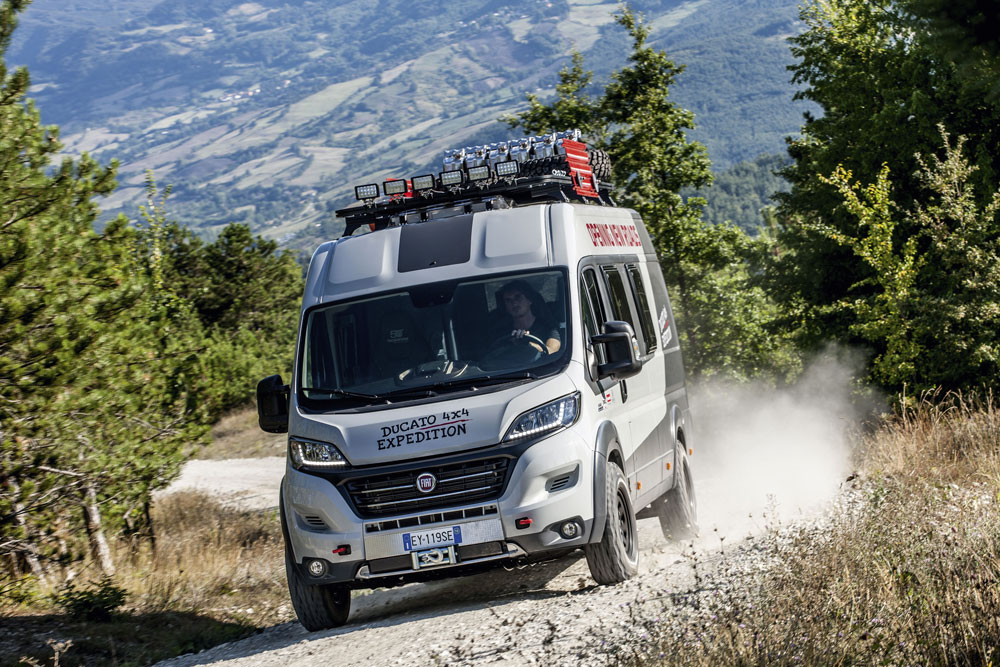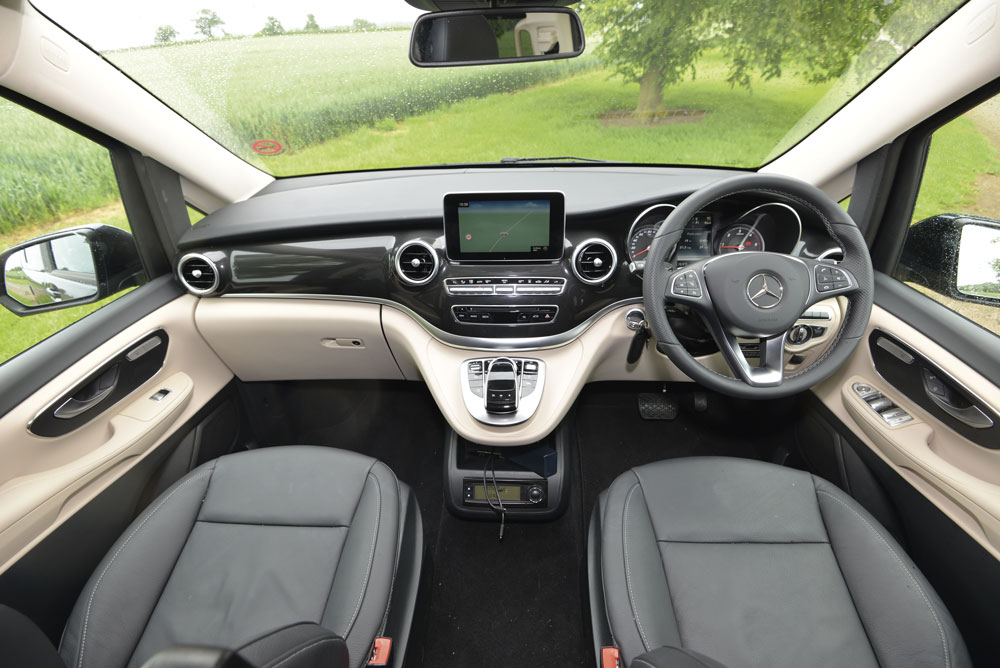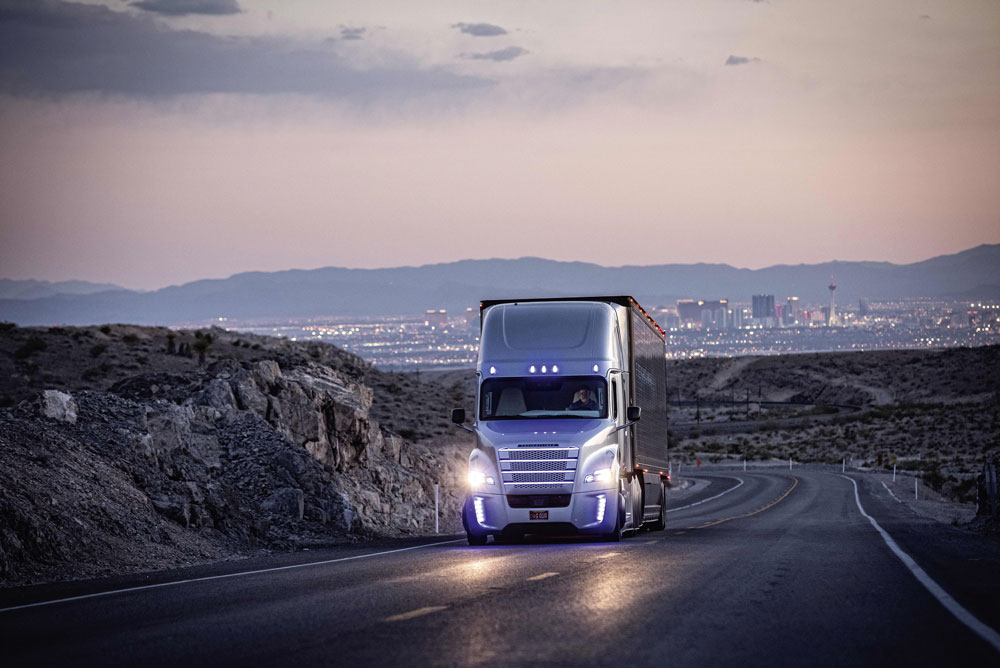Motorhome advice: A guide to safety technology systems for motorhomes and campervans
Words: Peter Rosenthal
It used to be the case that van safety systems trailed behind the technology used in cars, but the gap has narrowed and modern vans come with a whole suite of safety equipment, some of which is standard, some optional.
Safety systems can be split into two main types: active and passive. Passive systems work after a crash and include items such as airbags, seatbelts and crumple zones. Active safety systems help prevent a crash and include ABS brakes, stability control systems and emergency brake assist.
ABS Brakes
All new motorhomes are fitted with anti-locking brakes, called ABS (automated braking system) that prevent the wheels locking under heavy braking to help you retain steering control.
ABS systems typically use small toothed metal discs (reluctor rings) that are fitted near each wheel and are linked to wheel speed sensors (electromagnetic coils). By monitoring these wheel speed sensors – which pulse on and off as the magnetic field of the sensor is broken – the ABS control box knows if a wheel has locked and how fast it is rotating. So, when you’re cornering, it knows that the inner wheels are rotating more slowly than the outer wheels.
If it senses a lock-up, it momentarily releases the brake on the locked wheel before automatically reapplying it in a fraction of second. The driver will feel a slight pulse through the pedal when it initiates this ‘automatic cadence braking’ and it can do this up to 15 times a second. Far faster than any human can cadence brake.
ABS works in wet and dry conditions but isn’t at its best in deep snow where the ability to lock the wheel solid and create a snow bank under the tyre can be helpful. So, drive a little slower in snow!
The ABS system does not just work on its own, though, and is a key component that integrates with most of the other safety systems on the vehicle, such as the stability control system and EBD system.

Electronic Brake Force Distribution (EBFD, EBD)
Prior to anti-lock braking systems, vehicles used a mechanical brake proportioning valve to vary the brake pressure between the front and rear brakes. This was typically a simple hydraulic valve fitted on or near the rear axle and its job was to reduce the pressure acting on the rear brakes during emergency braking.
When you hit the brakes hard in an emergency the motorhome’s front will dip sharply as the weight transfers to the front. If the pressure acting on the front and rear brakes was kept equal, when the weight transferred forwards, the rear brakes would lock before the front brakes. This would make the back end skid and want to overtake the front, which could put the vehicle into a spin. So, the proportioning valve is essential in reducing this pressure on the rear brakes to ensure that the vehicle always brakes in a straight line.
As ABS systems got more sophisticated, the engineers dispensed with the mechanical brake proportioning valve and added electronic brake force distribution to the ABS unit. Rather than being a mechanical device that merely varies pressure depending on a fixed range of movement, the electronic systems can infinitely vary the pressure between the front and rear brakes to give additional benefits.
For example, engineers set the rear brakes on some vehicles to activate slightly earlier to keep the vehicle flatter under braking to give a smoother stop.
Emergency Brake Assist (EBA)
This active safety system is not to be confused with fully automatic braking but does have an element of automony. If you hit the brake pedal hard and fast – in an emergency – the EBA system will react and, if the pedal isn’t being pushed hard enough, will add extra braking power until the ABS system activates. This gives maximum braking even if you’re not pushing the brakes hard enough.
Electronic Throttle Pedal (fly by wire)
Most modern throttle pedals are electronic and don’t have a physical wire linking the pedal to the throttle body on the engine. This gives many benefits. For example, the pedal operation can be integrated into the ECU and ESC systems and it doesn’t have to operate in a linear way. The engineers can make it be less sensitive at lower throttle openings for smoother low speed driving for example, while making it faster to respond to high throttle openings. This makes it easy to drive smoothly in town, for example.
Traction Control System (TCS)
Traction control or anti-slip regulation (ASR) is fitted to all vehicles with ESC and reads data from the wheel speed sensors. If it senses one wheel is spinning as it’s lost traction, it will either reduce the power to that wheel, apply a little brake pressure or even reduce the throttle angle. Some makers also add an off-road setting to help vehicles on slippery terrain.

Electronic Stability Control (ESC)
Since November 2014, it has been mandatory for all new vehicles to be fitted with stability control. It is reckoned that widescale ESC adoption will save up to 3,000 fatalities a year and prevent 50,000 injuries.
Also referred to as electronic stability programme (ESP) and dynamic stability control (DSC), this is one of the most significant safety systems on a vehicle as it oversees multiple systems and can react in various ways to actively help balance and stabilise the vehicle.
ESC typically integrates with the ABS system, the ECU, steering wheel angle sensor, as well as a yaw rate and lateral acceleration sensors. On some vehicles it also includes roll rate and longitudinal acceleration sensors.
By interpreting all this data, the ESC knows what the vehicle is doing relative to the driver’s inputs and can react accordingly.
The tools in the ESCs armoury include activating the front or rear brakes on one side of the vehicle and/or adjusting the throttle.
In normal circumstances, you’d never know a vehicle has ESC, but if your vehicle aquaplanes or slides on a patch of diesel, the system will react and deal with the issue.
With the system switched off and a slide instigated, even an F1 driver would struggle to react quick enough to get the vehicle back in line while, with the system active, a slide is nipped in the bud so rapidly it can’t develop into anything dangerous.
A common myth is that vehicles ‘handle better’ with stability control, but this isn’t how it works. It only intervenes when something has gone wrong – such as a front or rear slide or excessive body roll.
This is a particularly useful feature for motorhomes and uses sensors to work out the roll centre of vehicles and, crucially, can adapt to the positioning of weight on a vehicle. So in a motorhome it can adjust the settings of the ESC system depending on how the vehicle is loaded and can take into account the different ways in which people load and use their vehicle.
Roll Over Mitigation and Cross Wind Assist

This system reacts to sudden changes in vehicle movement, such as swerving, or reacting to a crosswind. It works with all the ESC sensors, particularly the lateral force sensor. If the force on this sensor is excessive it will rapidly apply the brakes or reduce the engine torque to reduce the roll.
Cross Wind Assist is Mercedes’ term for this system. Its system activates automatically above 50mph and takes into account the speed, load condition and distribution as well as the steering angle. If the driver steers in response to the cross wind, the systems response reacts to this.
Cruise Control or Adaptive Cruise Control (ACC)
Traditional cruise control systems allowed you to set a speed and then varied the throttle pressure to maintain that speed. Going up steep hills they tended to simply cut out and going down steep hills they couldn’t slow the vehicle down.
Adaptive or active cruise control (ACC) links with the ECU and can vary the speed to maintain a constant. It uses radar or lasers to scan the road ahead and can be set to maintain a certain gap behind the vehicle in front.
It will also react if vehicles pull in front of you, which is generally a good thing, but can be jerky on busy motorways where cars regularly push in front of a motorhome.
It is often linked to an automatic braking system.
Autonomous Emergency Braking (AEB)

These systems link to the radar or laser system of the active cruise control and usually also have a camera (or cameras) to monitor the road ahead. They can act autonomously and apply the brakes if they detect something ahead of the vehicle getting too close too rapidly.
Some of these systems work at lower speeds, while others can also work at higher speeds. They give an audible and visual warning when they’re about to trigger, so the driver can always take control manually.
They usually only act in the forward direction on vans, but some cars now also have it acting in reverse so this is sure to filter down in time.
Variable Speed Limiter
A variable speed limiter either alerts the driver if the preset speed is exceeded or limits the throttle action.It can also be preset in the ECU at a set value – as in the case of commercial vehicles where the speed is often fixed at 56mph, 62mph, 68mph or 70mph.
Hill Descent Control (HDC)
This is available on the Fiat Ducato and it allows a vehicle to tackle a slope of up to 50% without any driver input by using the ABS system to manage the brakes on the descent. The speed of descent can be preset, while touching the accelerator or brake pedal will override it.
Lane Departure Warning System (LDWS)
We’ve all done it: not spotted a vehicle in our mirror and pulled out on it. Happily, LDWS knows which lane of the motorway you’re in and, even if the weather isn’t great, will give a signal (usually a flashing LED warning light in the side mirror glass) if there’s an object approaching or in the way.
As many motorhomes have bulky bodies with blind spots, it is a very helpful bit of kit.
Some vehicles will even change lane for you automatically when you activate the turn signal – and can vibrate the steering wheel or seatbelt if they detect you veering off the road or across another lane.
Traffic Signal Recognition (TSR)
This uses a camera to recognise speed limit and overtaking signs and can then alert the driver to these via the on-board display. This may seem like a novelty but it’s designed with autonomous vehicles in mind.
High-Beam Recognition
This automatically dips your headlights from full beam when an oncoming vehicle is detected and then switches back to full beam when the vehicle has passed. It’s a great idea to help prevent you being dazzled and is particularly welcome in the era of the ultra-bright LED headlight.
Rain and Dusk Sensors
This sensor is mounted in front of the rear view mirror on the windscreen and can automatically detect ambient light – activating headlamps at dusk or in tunnels – as well as switching on the wipers automatically when rain is detected on the windscreen.
Hill Holder
This is one of our favourite gadgets on a motorhome as it automatically holds the brakes on for a few seconds when you come off the brake pedal and move your foot to the accelerator. It stops the vehicle rolling back and saves drivers having to use the handbrake – very useful.
Physics is always king
As effective as all these safety systems are, they can’t get around the laws of physics and there is a limit to what they can actually do.
They can’t compensate for people driving into a sharp corner at 100mph – the motorhome’s mass will always dominate. Equally, auto braking systems can’t brake any more efficiently than the system they’re bolted to, the road’s grip levels and the tyre’s coefficient of friction.
To give all these systems the best possible chance of keeping you safe if they’re ever called upon, you have to do your bit. Keep your tyres correctly inflated and in good condition, don’t overload your vehicle and drive to the road conditions.
But, there’s no doubt that these electronic aids do greatly increase safety and generally only step in when there’s a need.
It’s like having your own safety angel travelling in the motorhome with you. And that has to be a good thing for all of us
The original version of this article was published in the Summer 2019 edition of MMM magazine. To buy a digital back issue, click here.








Recent Updates
Engine management lights: all you need to know
What is the engine management light? What does it mean, and what do I have to do? ...
Motorhome air suspension: all you need to know
Motorhomes are heavy and the additional weight of equipment and height of the bodywork can increase the loads ...
Motorhome WiFi: how to get better motorhome internet
Staying connected on the move is more and more essential, so relying on campsite WiFi isn't an option – here ...
A class of their own - our guide to A-class motorhomes
Thinking of trading up to an A-class, or even going straight to the top of the motorhome tree? We guide you ...
Explore overseas on a motorhome dream tour
Enjoy exotic travel in a campervan or motorhome by hiring, swapping with someone else or exporting your ...
Motorhome water systems: everything you need to know
On-board water is an important part of every motorhome – here’s everything you need to know ...
Campervanning in Europe: what you need to know
Whether you're planning a leisurely drive through the French countryside, navigating bustling city streets in ...
Campervan security: all you need to know
With thefts on the increase, it’s important to know how to keep your campervan secure and prevent campervan ...
Campervan furniture: everything you need to know
Our campervan experts guide you through all the essentials for your campervan, including tables, chairs, ...
Campervan finance: how to fund your purchase
Here we look at the different types of campervan finance available, to help you decide what’s the best option ...
Other Articles
Britain’s best used motorhomes
Want a great motorhome without paying the premium for a new one? Here's a guide to the best you can get in the pre-owned market for each layout, ...
Which motorhome? Choosing the perfect motorhome for you
Choosing a motorhome or campervan is one of the biggest buying decisions you’ll ever make, so it's important ...
Campervan washroom essentials: stay fresh on the road
Our guide will take you through the campervan washroom essentials you'll need so you're well-prepared for ...
Dogs in campervans: all you need to know
Follow our advice and your dog will enjoy campervanning as much as you do ...
Electric campervans: all you need to know
Our guide will take you through everything you need to know about electric campervans and what the future ...
Motorhome electrics: a complete guide to your motorhome electrical set-up
Motorhome electrics can dramatically enhance the convenience and comfort of your vehicle – but they can be ...
Lighting for campervans: all you need to know
We guide you through all the lighting options available for you and your campervan, including interior ...
Electric bikes for motorhomes: our ultimate guide
Read our comprehensive guide to electric bikes for motorhome owners, helping you add electric power to your ...
Our guide to 'cheap' motorhomes in 2024
If you're on the hunt for an affordable new motorhome, this is the best place to start – we've rounded up a ...
Campervans in winter: all you need to know
Here's your guide to preparing your campervan for the colder months, whether you will be using it or putting ...